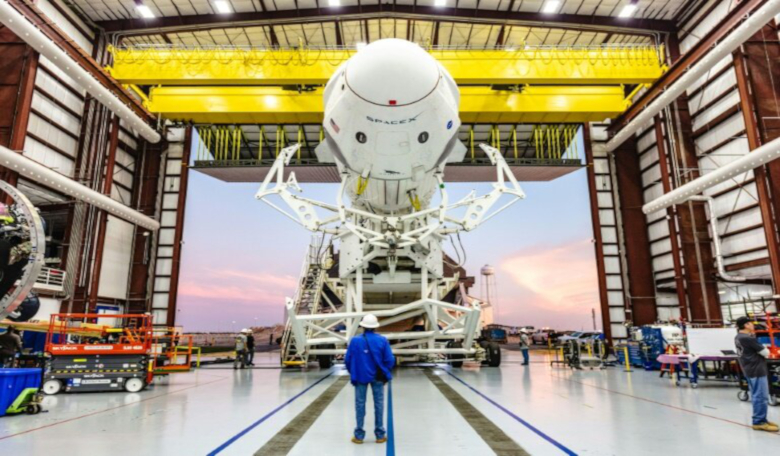Plans for SpaceX to fly a crewed test flight in July this year with its commercial Crew Dragon test vehicle have undoubted being put back to possibly next year, after an anomaly occurred with its SuperDraco thrusters during a static fire test at the weekend.
Nearby beach-goers saw orange smoke pour out from Cape Canaveral during the test that was big enough to show up on radar.
Although SpaceX did not disclose at the time what Crew Dragon vehicle was being used for this test, it has now been confirmed that the craft, which is "all but destroyed" was the DM-1 capsule that docked with the International Space Station for four days earlier this year, before returning to Earth and splashing down in the Atlantic Ocean off the Florida coast.
The DM-1 (Demo-1) had been planned for an inflight abort test later this year, which would have tested if its SuperDraco thrusters could pull itself away from a Falcon 9 rocket in the event of an anomaly with the launch vehicle, however it is unclear how this significant static fire incident will affect that test, other than to lead delays to NASA’s Commercial Crew Program (NCCP).
Following the incident, SpaceX were quick to release limited information in a general statement to the public; "Earlier today, SpaceX conducted a series of engine tests on a Crew Dragon test vehicle on our test stand at Landing Zone 1 in Cape Canaveral, Florida. The initial tests completed successfully but the final test resulted in an anomaly on the test stand. Ensuring that our systems meet rigorous safety standards and detecting anomalies like this prior to flight are the main reasons why we test. Our teams are investigating and working closely with our NASA partners."
In a statement posted to Twitter, NASA Administrator Jim Bridenstine followed with a similar reassuring message echoing that from SpaceX: "The NASA and SpaceX teams are assessing the anomaly that occurred today during a part of the Dragon Super Draco Static Fire Test at SpaceX Landing Zone 1 in Florida. This is why we test. We will learn, make the necessary adjustments and safely move forward with our Commercial Crew Program."
Incidents abound for NASA’s NCCP at the moment as Boeing's Starliner, the other vehicle that the space agency plans to use for ferrying astronauts to and from the ISS has also had setbacks of its own. Up until the weekend, SpaceX was considered by many to be ahead of Boeing with a higher chance of flying crew this year but this latest incident will now throw the Commercial Crew schedule into doubt.











